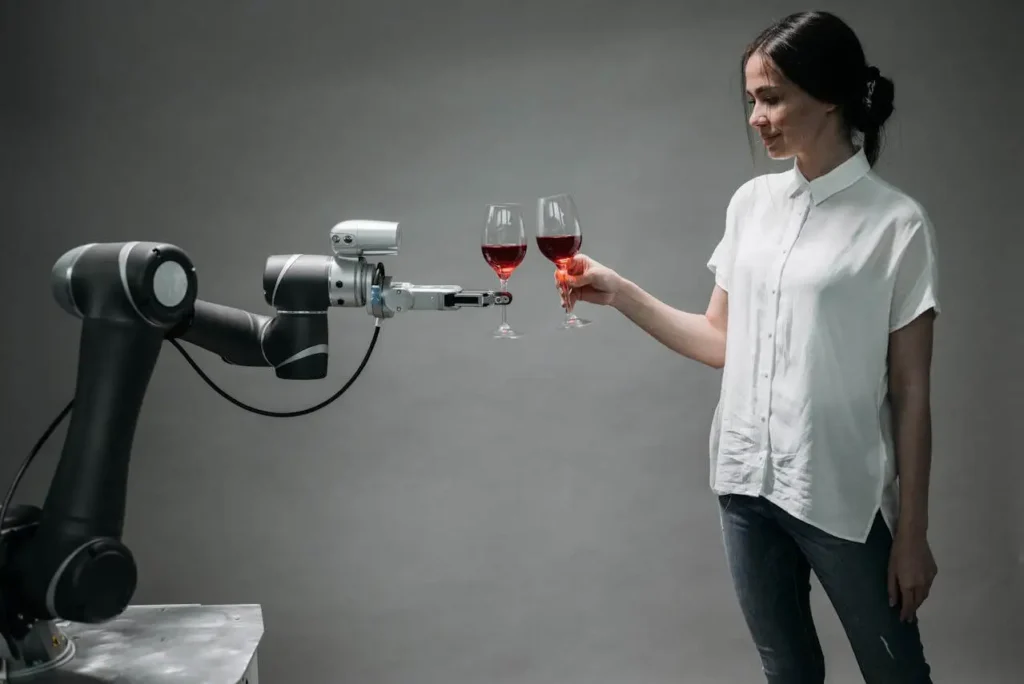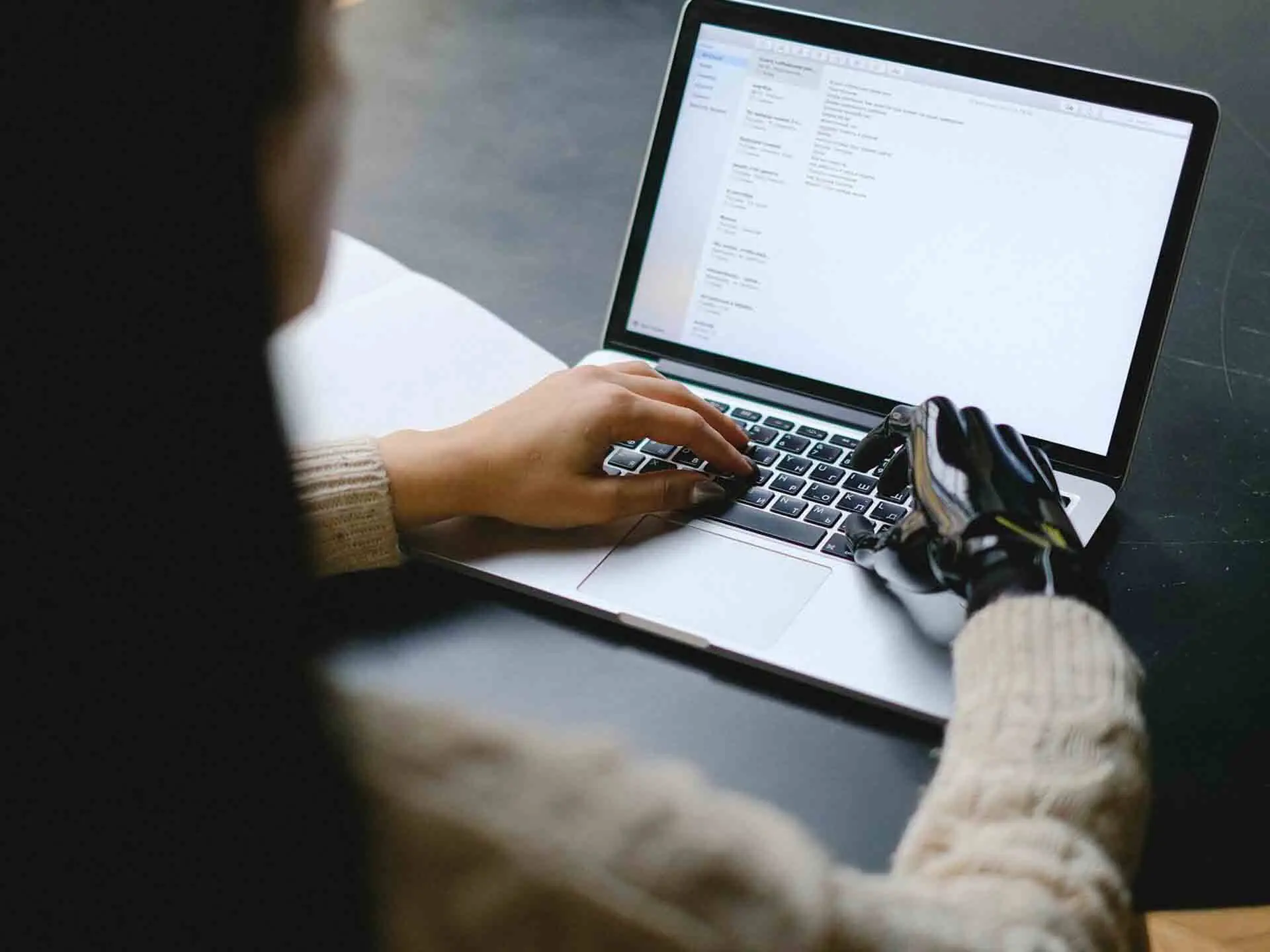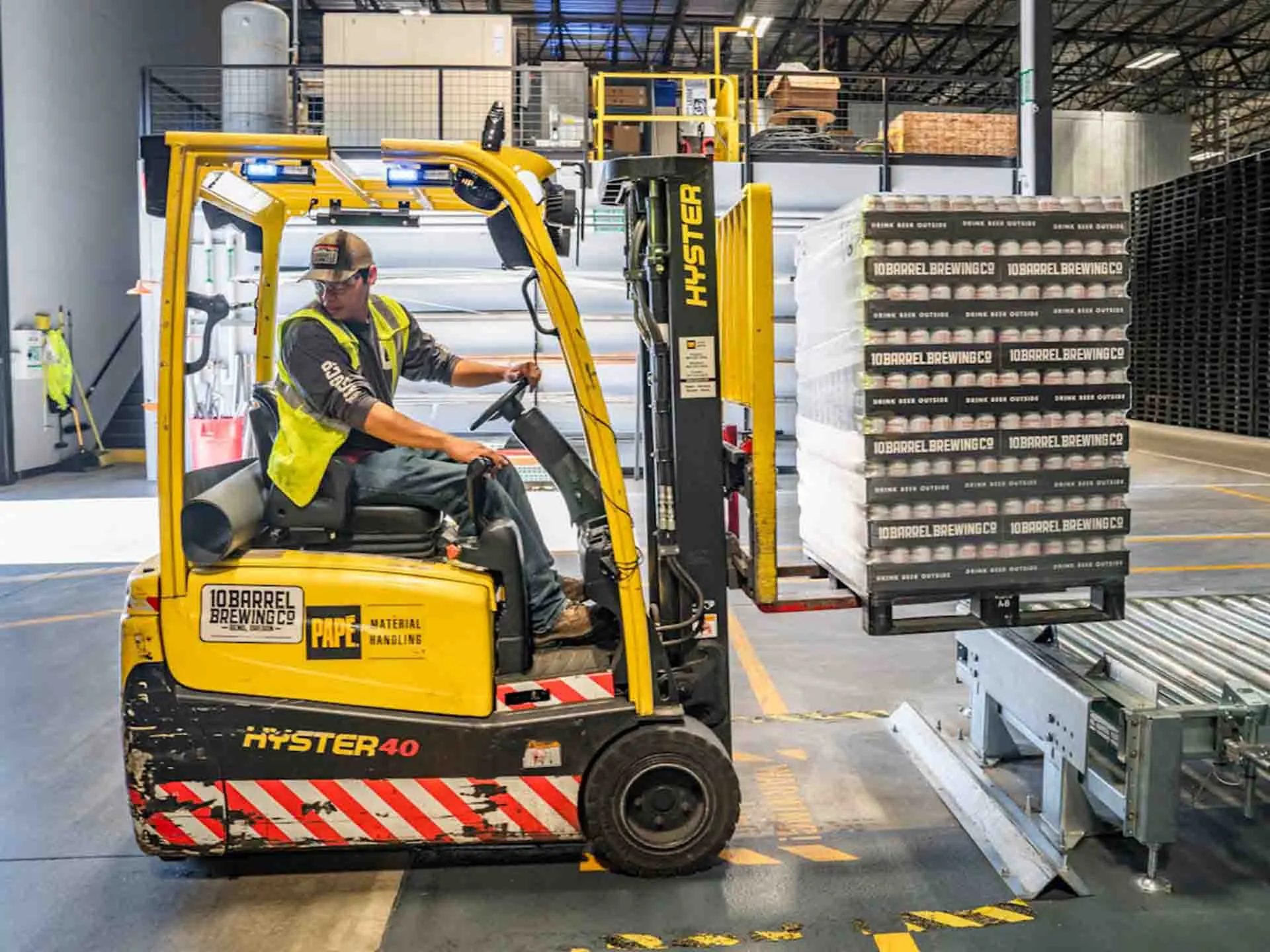The world of business is a fast-changing one. As AI has become a powerful new business tool, that has only accelerated. It’s natural to worry about such a dominant technology replacing humans entirely. It can certainly cut down on human involvement in mundane, repetitive tasks. But AI isn’t about replacing humans—its real value is about working together to achieve amazing results. Today, we will uncover the tip of the iceberg: creating a winning collaboration that delivers results.
What is Human-AI Collaboration?
Think of AI-human collaboration as the new evolution of business teamwork. Each brings its unique strengths to problem-solving. Humans are creative, with emotional intelligence and complex decision-making skills. AI offers lightning-fast data processing, pattern recognition and tireless performance.
Key Benefits of Working with AI
This ideally positions human-AI collaboration as a potent business tool that can:
- Boost Productivity: AI can handle repetitive tasks quickly, freeing up humans to focus on more creative and strategic work. For example, AI can sort through hundreds of customer emails in minutes, letting your team concentrate on solving more complex customer problems.
- Improve Accuracy: Machines are great at catching details that humans might miss. They can review large amounts of information without getting tired or distracted.
- Make Smarter Decisions: By analyzing massive amounts of data, AI can provide insights that help humans make better, more informed choices.
How Businesses Can Start Using Collaborative Intelligence
Despite the potency of this kind of collaborative intelligence with AI, getting started doesn’t have to be complex. There are some simple, practical steps businesses can take to get going with AI collaboration smartly.
1. Identify Repetitive Tasks
Repetitive tasks. Also known as the bane of businesses. Often dull and always a time-sink that wastes human talent. Now, imagine you can skip right through that grind instead. With AI, that’s no longer a pipe dream but a tangible reality. One you, too, can harness. Look for tasks in your business that:
- Are repeated often
- Require similar steps each time
- Take up a lot of human time
These are perfect opportunities to embrace AI assistance. With the numbing data-crunching handled more effectively by AI, humans can get on with the real tasks it reveals. Marketing teams might use AI to draft initial social media posts, while customer service teams could use AI to handle basic customer inquiries. With the need for mundane, repetitive tasks aptly handled, your team can focus on driving real value where it counts.
2. Choose the Right AI Tools
We all remember the joys of school group projects. Inevitably, someone did all the hard work while someone else shared the glory unjustly. Using the wrong AI tools in your business runs the same risk. As the technology is novel and developing swiftly, plenty of tools are on the market. Not all are created equally, nor are they right for every business. When selecting an AI solution, consider its:
- Ease of use
- Integration with your current systems
- Specific features that match your business needs
- Cost-effectiveness
Rather than rushing to have AI because it’s ‘in’, instead, think carefully about where it can deliver. The goal is maximum business value, not being the ‘cool kid’ because you jumped first.
3. Train Your Team
We’re only as good as the knowledge we use, right? For successful AI collaboration, your team needs to understand how to work with AI tools. Not just know they’re there and carry on the old way anyway! This means:
- Providing training sessions
- Encouraging experimentation
- Creating a culture of continuous learning
Collaboration will only work for business goals where staff feel empowered, educated and confident. Nurturing this AI-First MindsetTM is essential for success.
Real-World Human-AI Collaboration Examples

Are you still uncertain how collaborative intelligence with AI could work for you? Let’s look at a few cases of human-AI collaboration that are becoming business staples.
Marketing: Content Creation
Great content is human, inspired by human creativity. However, much of the time-consuming groundwork for creation can be boosted by an AI helper. Your marketing team might use AI to:
- Generate initial draft blog posts
- Suggest headline variations
- Analyze content performance
- Recommend keywords
However, it shouldn’t stop there. The human marketing expert then reviews and refines to make the content engaging.
Customer Service: Intelligent Support
Solid customer service is a business essential. But let’s be honest: most customer queries do not need a full-suite service. Customer service is another great arena for collaboration. AI chatbots can handle basic customer questions 24/7, while human agents tackle more complex issues that require empathy and deep problem-solving.
Data Analysis: Insights and Interpretation
AI’s other great business use case is data crunching. While AI can quickly process vast amounts of data and highlight trends, it still can’t drive smart decisions from that data as well as a human. Human analysts are needed to interpret these insights, providing context and strategic recommendations.
Overcoming Common Challenges with Collaborative Intelligence and AI

When bringing the real dream of human-AI collaboration to life, there are a few challenges to face. Luckily, these can be smoothed out by a smart, focused integration and staff buy-in. Here are some of the key areas to focus on.
Address Fears About AI Replacement
Many people worry AI will take their jobs. The reality is different. But if all your staff see are heavy-handed changes, that fear is natural. Investing in your staff’s education is important, as is being realistic about AI’s workplace role. AI is a tool that enhances human capabilities, not a replacement for human workers.
Maintain a Human Touch
As with any new technology, a lot of AI hype is flooding the arena. It can be tough to keep a perspective on what AI can do and where its biggest uses lie. While AI is powerful, it lacks human creativity and emotional intelligence. Always keep humans in the loop for:
- Final decision-making
- Creative problem-solving
- Emotional nuance
This lets you use the best of technology and the best of what makes us human. Rather than seeing it as an either/or battle, see it as a true collaboration.
The Future of Human-AI Collaboration
The nature of technology is to grow and expand. As AI tools improve, human-AI collaboration will become even more seamless. Soon, we will begin to see AI adoption as a business differentiator. Businesses that learn to work effectively with AI will have a significant competitive advantage. Those who don’t will find themselves left behind. Future-proofing your business for AI means understanding:
- AI is a collaborative partner, not a replacement,
- How to start small and gradually integrate AI tools,
- How to focus on tasks that benefit from AI’s strengths,
- To keep humans central to decision-making and to
- Continuously learn and adapt
Human-AI collaboration is not about ‘winners’ and ‘losers’. It’s about creating a powerful team where technology and human skills complement each other.
By properly understanding AI’s capabilities and limitations, businesses can unlock incredible potential and drive real business innovation. If you’re unsure where to get started on your journey to AI adoption, feel free to reach out to AI-First Mindset™ today. We have the skills, knowledge and international credibility in the AI arena to help you kickstart your human-AI collaboration today.
Recent Posts
-
Published on: November 18, 2025
-
Published on: November 11, 2025
-
Published on: November 4, 2025








